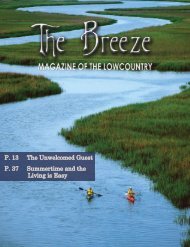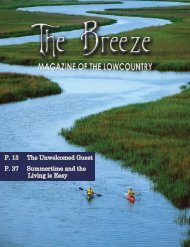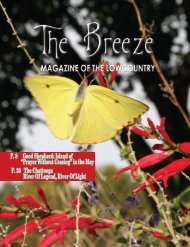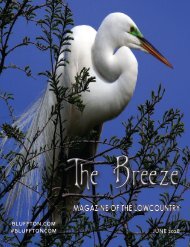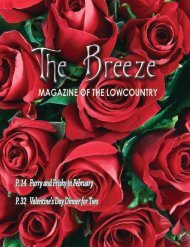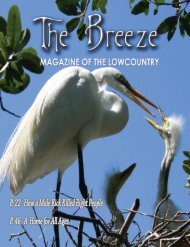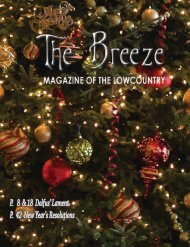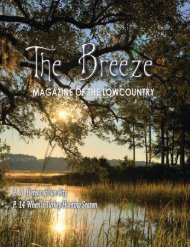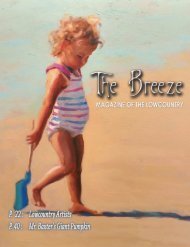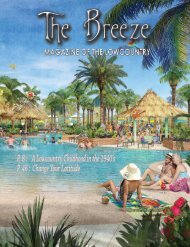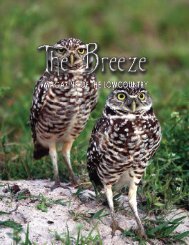Create successful ePaper yourself
Turn your PDF publications into a flip-book with our unique Google optimized e-Paper software.
Part 2:<br />
Waterfowl<br />
If it looks like a duck<br />
and quacks like a<br />
duck…it’s a duck, right?<br />
If only it were that easy.<br />
By Amber Hester Kuehn<br />
Of the winter waterfowl described here, not all<br />
are actually ducks. If you ask a five year old, they<br />
would probably say that a duck is a bird that floats<br />
on the water and waddles on land. However, that<br />
would also describe a pelican, a gull, and several<br />
others. Specifically, genetics qualify ducks as<br />
members of the family Anatidae along with geese<br />
and swans. Vaguely, they are defined as various<br />
water birds having a broad flat bill, short legs, and<br />
webbed feet. <strong>The</strong> following eight waterfowl are<br />
presently winter visitors in Bluffton.<br />
All of the birds listed are protected by the Migratory<br />
Bird Treaty Act of 1918<br />
Blue-winged Teal<br />
<strong>The</strong> blue-winged teal is a dabbling duck that eats aquatic insects such<br />
as midge larvae, but also dines on crustaceans, clams, and snails as well<br />
as vegetation. In order to feed on the bottom in shallow water, they<br />
invert their bodies to “dabble” or pick at the bottom of a freshwater<br />
pond, shaking a tail feather on the surface while submerging their head.<br />
Blue-winged teal are the second most abundant duck in North America,<br />
behind the mallard. <strong>The</strong>y migrate long distances and are usually the<br />
first to arrive down South and the last to head back up North.<br />
13




